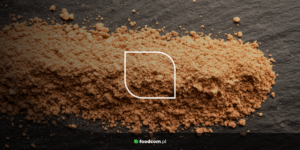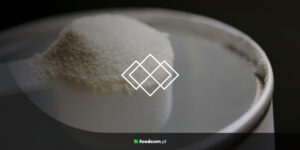Résumé
Table des matières
Industry sources in many European countries are concerned as milk quality is falling short of expectations. We will have to wait and see how the grass develops for the second cut and how farmers react to the massive increase in fertilizer prices. With the second cut, there could be a drop in quality as farmers have reduced fertilizer use to save costs. It looks like feed and nutrition will be important issues for milk supply in the coming weeks.
Continue reading to learn about this week’s market insights.
With us, you’ll never miss a thing!
SMP is offered in the range of 3.95 – 4.10 EUR/kg. In recent weeks, due to the lifting of import duties from Ukraine to the EU, a lot of Ukrainian cheaper raw materials have entered the market. We do not expect this raw material to cause a drastic drop in prices though, as we are aware that this raw material is limited. However, we have seen a slight easing in prices over the last 2 weeks.
Various signs in the market reflect the true price or lack thereof on FCMP. Looking at the German quotations, the price remains at a high level. Prices for roller and spray dried WMP continue to diverge widely.
Due to high demand for products used in infant formula and occuring high drying prices, D90 prices have reached 2100 EUR/MT. The availability of D90 powder is limited, there is even a shortage of raw materials on the market. Many manufacturers are starting to convert their production to use D40 and D70 instead of D90 products.
Many manufacturers are turning away from WPC 35, which is reflected in higher prices on the market. The sweet whey product is offered at prices ranging from at least 4000 to 4050 EUR/MT. In the past, this product was used as a substitute for MMP because it was the cheapest source of protein at that concentration. Formulas calling for WPC 35 are still used, even though production is considered to be lower, resulting in prices staying on a high level.
Producers cannot complain because of the good order situation in the last two months. There are big price differences between EU countries: Polish Mozzarella was available last week even for 4.75 EUR/kg, while the offer from EU15 countries is around 4.90 EUR/kg. The only cheese where we notice a price increase is the Cagliata. The increased interest in mozzarella cheese could be a result of the upcoming vacation season, which increases the consumption of pizza products worldwide.
Butter prices have a wide window in terms of upper and lower price ranges. This is due to the geographic location of the product and rising fuel prices. More expensive transportation and cold storage prices are driving up commodity prices for the product imported from farther away. As for the German retail chain – price up slightly by 4 to 8 cents per kg compared to the previous contract. Prices for goods from Central Europe may differ by up to 100 EUR/MT compared to Western European countries.
It is not surprising that after such a fall a week ago, prices have risen again, returning to normal. Considering that we are in the vacation season, there may be temporary bargains and higher quantities of raw materials on the market due to factory shutdowns.
After German cream prices fell the previous week as cheaper Polish products entered the market, prices rose again this week. Transportation difficulties prevent German buyers from sourcing additional cream in Eastern Europe, as cream cannot be transported well over a long period of time. Therefore, prices can rise significantly if tankers and truck drivers are not available.
Still a lot of seasonality in the milk market. Spot price quotations seem to have risen again in the previous week. Some suggest that many European factories are having trouble selling their spot milk while they are in maintenance. This could be a sign that prices will take a small drop. Milk supply in Holland is currently up, in the UK milk consumption continues to decline.
Continue reading to learn about this week’s market insights.
With us, you’ll never miss a thing!
Powders
SMP
SMP is offered in the range of 3.95 – 4.10 EUR/kg. In recent weeks, due to the lifting of import duties from Ukraine to the EU, a lot of Ukrainian cheaper raw materials have entered the market. We do not expect this raw material to cause a drastic drop in prices though, as we are aware that this raw material is limited. However, we have seen a slight easing in prices over the last 2 weeks.
FCMP
Various signs in the market reflect the true price or lack thereof on FCMP. Looking at the German quotations, the price remains at a high level. Prices for roller and spray dried WMP continue to diverge widely.
Demineralized Whey Powder
Due to high demand for products used in infant formula and occuring high drying prices, D90 prices have reached 2100 EUR/MT. The availability of D90 powder is limited, there is even a shortage of raw materials on the market. Many manufacturers are starting to convert their production to use D40 and D70 instead of D90 products.
WPC 80
Many manufacturers are turning away from WPC 35, which is reflected in higher prices on the market. The sweet whey product is offered at prices ranging from at least 4000 to 4050 EUR/MT. In the past, this product was used as a substitute for MMP because it was the cheapest source of protein at that concentration. Formulas calling for WPC 35 are still used, even though production is considered to be lower, resulting in prices staying on a high level.
Cheese
Producers cannot complain because of the good order situation in the last two months. There are big price differences between EU countries: Polish Mozzarella was available last week even for 4.75 EUR/kg, while the offer from EU15 countries is around 4.90 EUR/kg. The only cheese where we notice a price increase is the Cagliata. The increased interest in mozzarella cheese could be a result of the upcoming vacation season, which increases the consumption of pizza products worldwide.
Butter
Butter prices have a wide window in terms of upper and lower price ranges. This is due to the geographic location of the product and rising fuel prices. More expensive transportation and cold storage prices are driving up commodity prices for the product imported from farther away. As for the German retail chain – price up slightly by 4 to 8 cents per kg compared to the previous contract. Prices for goods from Central Europe may differ by up to 100 EUR/MT compared to Western European countries.
Liquids
It is not surprising that after such a fall a week ago, prices have risen again, returning to normal. Considering that we are in the vacation season, there may be temporary bargains and higher quantities of raw materials on the market due to factory shutdowns.
Cream
After German cream prices fell the previous week as cheaper Polish products entered the market, prices rose again this week. Transportation difficulties prevent German buyers from sourcing additional cream in Eastern Europe, as cream cannot be transported well over a long period of time. Therefore, prices can rise significantly if tankers and truck drivers are not available.
SMC
Still a lot of seasonality in the milk market. Spot price quotations seem to have risen again in the previous week. Some suggest that many European factories are having trouble selling their spot milk while they are in maintenance. This could be a sign that prices will take a small drop. Milk supply in Holland is currently up, in the UK milk consumption continues to decline.
Catégories







